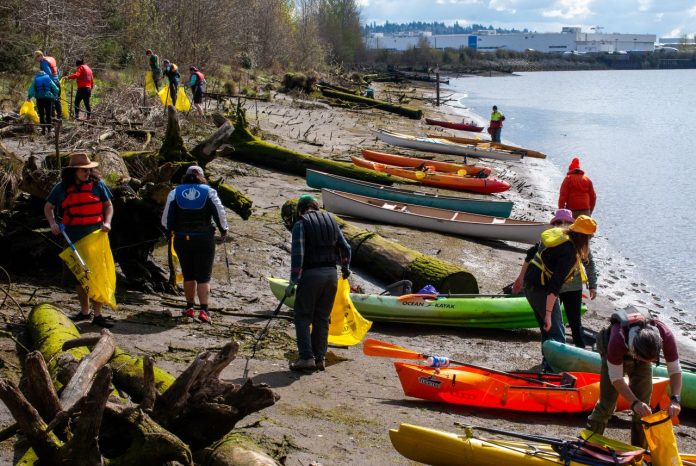
Advocates are pushing for a cleaner Duwamish River and affordable housing that ensures locals benefit.
Lee Lee steered a small wooden boat down a secluded stretch of the Duwamish River to a shoreline accessible only by water.
Along a chain-link fence dividing Boeing Field from the narrow beach, paddlers collected garbage and loaded 400 pounds of it onto Lee’s skiff and their own kayaks.
The haul was bittersweet.
“To be able to physically remove some of those harmful products, stuff like plastics and styrofoam … it feels good,” said Lee, co-founder of the River Access Paddle Program. “But there’s still a lot more work to do.”
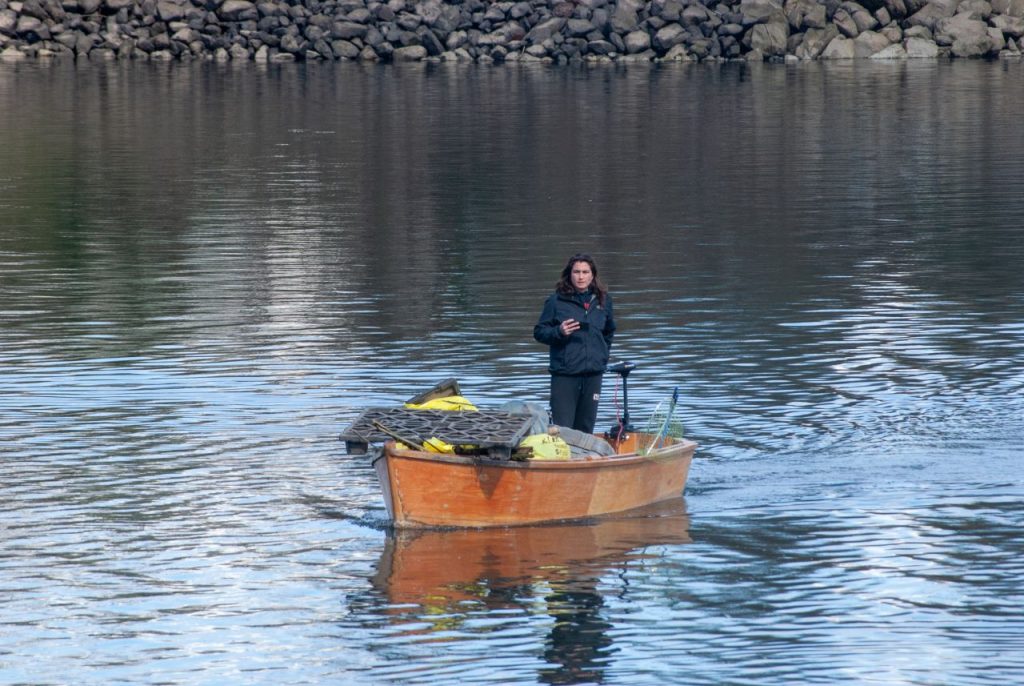
While the program’s mid-March cleanup took on surface-level waste, beneath the water and within the sediments lie chemicals far more concerning that the Environmental Protect Agency (EPA) and local governments have been trying to address for decades. This fall the EPA will start its wide-scale cleanup of the Lower Duwamish Superfund Site, one of the most expensive remediation projects in the country.
Environmental advocates and people who live there have long awaited a clean river, but also worry about who will be around to experience it when it finally arrives.
Along the river, once overlooked neighborhoods such as South Park and Georgetown have long grappled with gentrification as Seattle has boomed. The prospect of a cleaner river and rehabilitated land is just one more thing that adds to the allure of the city’s South End — where some of its most racially and ethnically diverse communities live.
For residents like Robin Schwartz, who’ve called the valley home for 17 years, there’s a sense that government cleanup plans and green initiatives could do more to address the evolving needs of their community. Without a more comprehensive approach, one that includes affordable housing or equitable land redevelopment, they are left to worry about their future.
“Everything new that comes brings a little bit of a fear of repercussions,” she said.
Addressing multi-generational displacement
After the U.S. government forcibly removed the Duwamish Tribe from their traditional lands along the river, the Army Corps of Engineers converted it into an industrial waterway that companies polluted for a century.
The heavily industrialized surrounding area became undesirable for residential use. But with redlining policies, people of color and those with little income found themselves in a contaminated valley, along with the descendants of the Duwamish Tribe members who had stayed in Seattle.
In the absence of government support, communities established their own essential services and tirelessly campaigned for a comprehensive cleanup of the Duwamish River. Today’s residents and advocates uphold their legacy, striving to safeguard what they built.
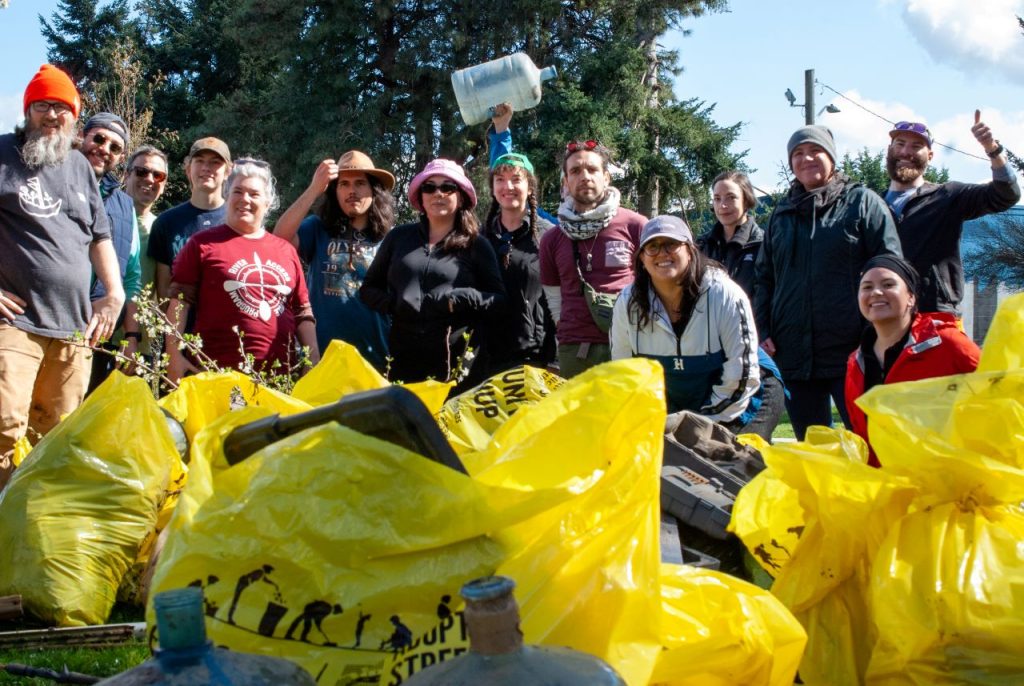
“Folks have done their best with limited resources in these communities to make it a livable place and a good place for kids and families,” said Schwartz, who works with the Duwamish Valley Affordable Housing Coalition and Duwamish River Community Coalition. “And as we see these improvements, many folks are not able to benefit from them.”
Housing coalitions across the city have been asking Mayor Bruce Harrell and his predecessors for actionable anti-displacement solutions for years. But city leadership has failed to create affordable housing commensurate with the need or spur sufficient housing growth to outpace the need and moderate prices.
This March, the Harrell Administration released a draft of a comprehensive plan that aims to guide the city’s trajectory for the next 20 years. The mayor wrote that the plan will embed “concrete anti-displacement strategies every step of the way.”
One of those steps calls for policymakers to identify and support neighborhoods that are anticipating significant investments and environmental changes. The details within that policy are still materializing, and it could take years to put into effect.
Those looking for solutions now have turned to systems already in place.
Building affordable housing on remediated land
Northwest of Duwamish Valley, nestled in Mount Baker, stands a pair of vibrant six-story apartment complexes containing 200 units of affordable housing — a stark departure from the landscape a few years ago in 2016.
“There were two contaminated sites across the street from each other … [They] had been there for a while and were sitting vacant,” said Sandra Matthews with the Department of Ecology’s Toxic Cleanup Program.
Staff with the Mt. Baker Housing Association, a nonprofit organization that develops affordable housing, came to her team with an idea to build one of their communities on it. The proposal ticked all of the boxes: the sites were within walking distance to Mount Baker’s light rail station, federal funding was available, and development would accelerate the remediation of a site contaminated with petroleum products and industrial solvents.
The department also saw the project as a way to thwart environmental gentrification — the cycle of displacement spurred by cleanups or green initiatives. So, the cleanup program, with help from the state Attorney General’s office, spearheaded a pilot program funded in part by the Model Toxics Control Act, which generates revenue from taxes on businesses storing hazardous waste.
The act initially granted funds solely to local governments for remediating contaminated properties, excluding private entities and nonprofits. To support development financially, the Department of Ecology navigated a complex process to establish a residential opportunity zone in Seattle and secure $6.2 million from the legislature.
The Maddux Apartments began leasing in 2022, the same year that the state legislature created a permanent, streamlined statewide grant program for cleaning up contaminated sites designated for affordable housing.
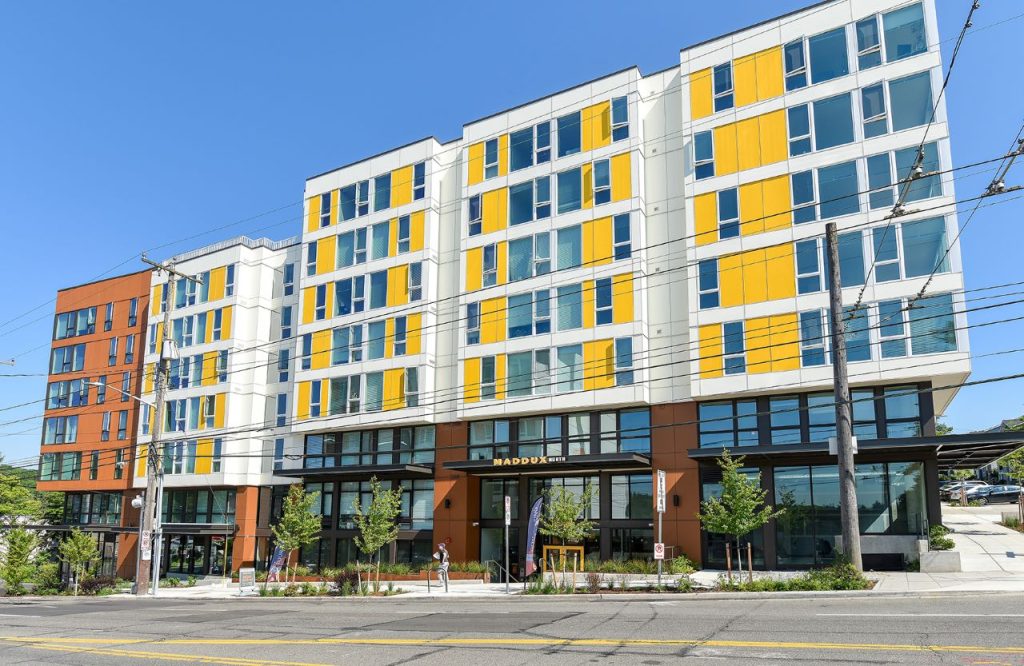
“We’re still working out some kinks,” said Matthews, who now works with the Department of Ecology’s affordable housing grant program. “The way we work is not necessarily the way nonprofit and private developers work. The time scale is different, and so the road can be a little bumpy.”
It gets even bumpier if the land is associated with a Superfund site, such as in the Duwamish Valley, and the department can’t initiate an affordable housing grant on a site. That has to come from a nonprofit organization, business, or local government.
Superfund’s evolving approach to environmental justice
The Lower Duwamish River Superfund site is a notoriously complicated cleanup that the state Department of Ecology and EPA collaborate on together. Dividing responsibilities, the state department handles remediation above the waterline, while the federal government focuses on what lies below.
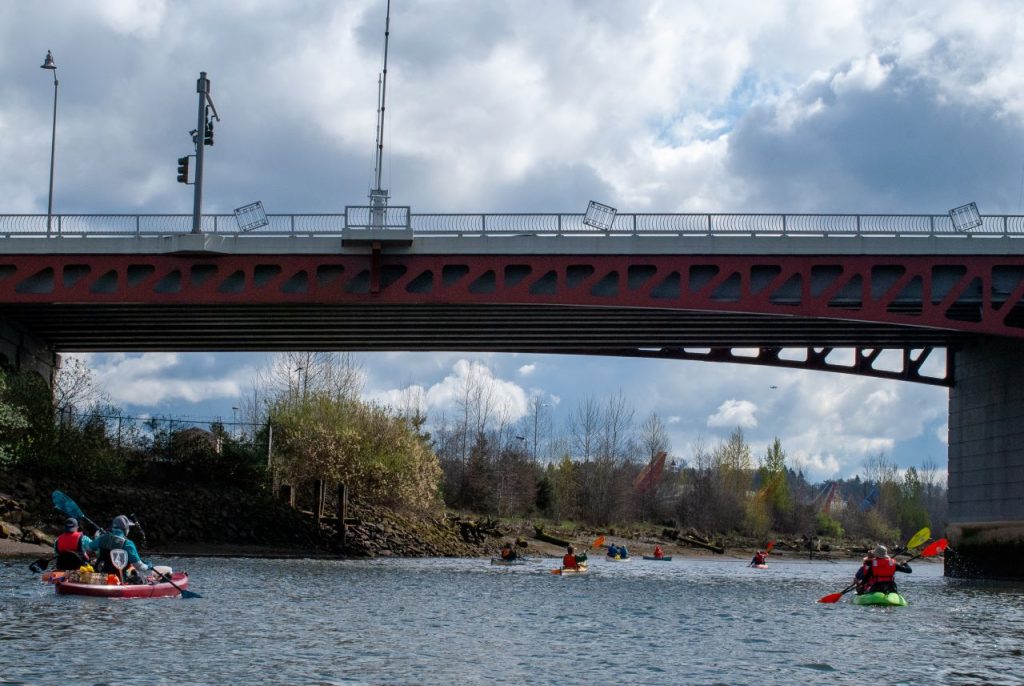
The cleanup is happening in three stages, starting upstream and moving down to Harbor Island. The Department of Ecology has to clean up the banks before the EPA can clean the water, to stop runoff from re-contaminating the river.
Now that the upper part is clean, the EPA will start cleaning the riverbed this fall. When they are done, the agency won’t have much involvement in the land redevelopment.
While the agency has developed guidance for environmental justice best practices in its public engagement, it hasn’t implemented a strategy that helps to hold physical space for affordable housing or community-oriented development.
“Once a Superfund site is at the reuse stage, the EPA’s role tends to be limited to just making sure that the integrity of the cleanup is maintained and it remains protective of human health and the environment,” said Laura Knudsen, public affairs specialist with EPA Region 10. “But I feel like it has the capacity to think creatively, because what the program does on paper is facilitating conversation and bringing different groups together.”
The EPA Northwest region doesn’t expect significant development along the Duwamish Superfund site once it is completed, simply because the land is already under ownership by industrial businesses. However, the EPA has recognized community concerns regarding gentrification prompted by proposed development projects on parcels surrounding the remediated site.
Holding space for community land ownership
Systemic change in governments takes time, and communities like those in the Duwamish Valley are contending with several facets of gentrification and fast-paced development of upscale housing.
So when the Shared Spaces Foundation learned about a parcel of dilapidated land near the Duwamish Longhouse for sale in 2020, they felt that they needed to act on it before a developer did
The Duwamish Tribe currently owns less than one acre of land because they are not a federally recognized tribe, and the Treaty of Point Elliott did not grant them a reservation. This 3.5 parcel stands on an original village site that settlers burned, clearing another path for riverside development, Lee said.
“That’s our first case of displacement and gentrification in the city,” said Lee, who works with both the River Access Paddle Program and the foundation as the field director of their landback project, the Heron’s Nest.
As a form of restorative justice, the foundation started leasing the land in efforts to purchase and return it to the Duwamish Tribe. After cleaning up the property, they transformed the space into a place for cultivating native plants and food, practicing cultural traditions, and teaching skills to young people.
“Projects like this are directly addressing those issues [like gentrification] and holding space for more land acquisition,” said Lee. “You are seeing the same thing happen in South Park being gentrified …. because there’s not an opportunity for those smaller groups of businesses to actually have autonomy or ownership.”
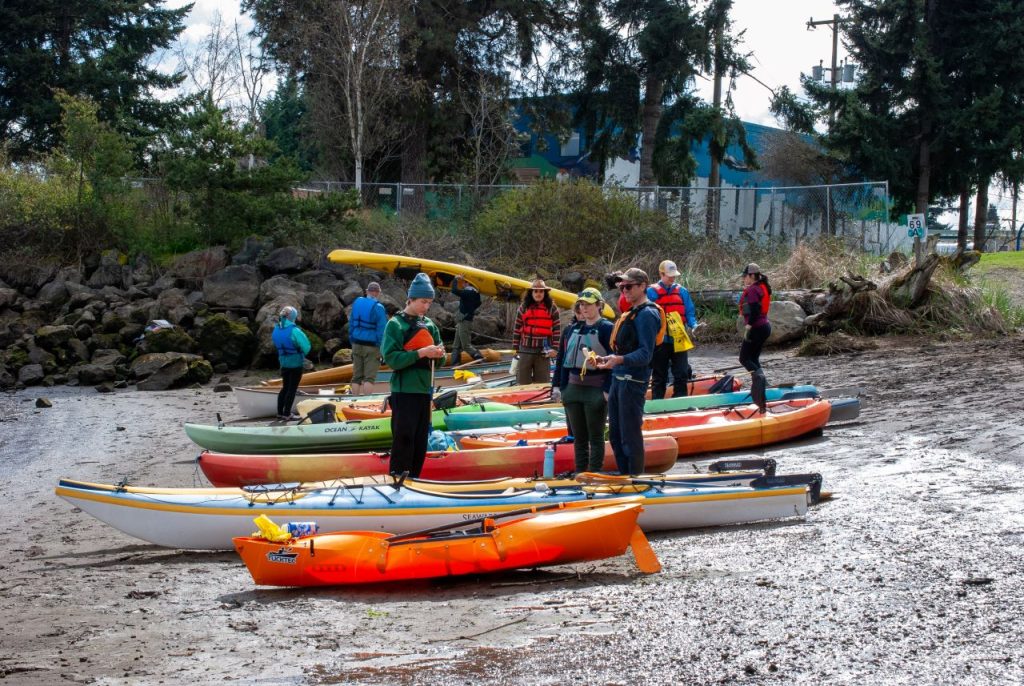
In response, organizations led by the Duwamish Valley Affordable Housing Coalition incorporated as a community land trust last year. They are in the early stages of recruiting community members to identify housing strategies that align with their needs.
Both the Heron Project and the coalition have benefitted from financial backing through the Duwamish River Opportunity Fund; this grant program, managed by the City of Seattle, that builds capacity in communities to reach goals outlined in the 2018 Duwamish Valley Action Plan. That plan aims to address challenges that include several environmental triggers of displacement including climate change threats, such as sea-level rise worsening tidal river flooding in the valley — flooding that carries legacy contaminants from the Superfund site.
“While implementing the environmental improvements,” the plan reads, “it is imperative to prioritize the actions that will support place-making and anti-displacement.”
For this to happen, as governments are realizing, they must embrace systemic change and allocate funding at a pace and scale that empowers the people most knowledgeable about equitable land reuse: those who live, work, and want to stay in places they call home.
Correction: An earlier version misspelled Laura Knudsen’s name. We have corrected the error.

Ashli Blow
Ashli Blow is a Seattle-based freelance writer who talks with people — in places from urban watersheds to remote wildernesses — about the environment around them. She’s been working in journalism and strategic communications for nearly 10 years and is a graduate student at the University of Washington, studying climate policy.
